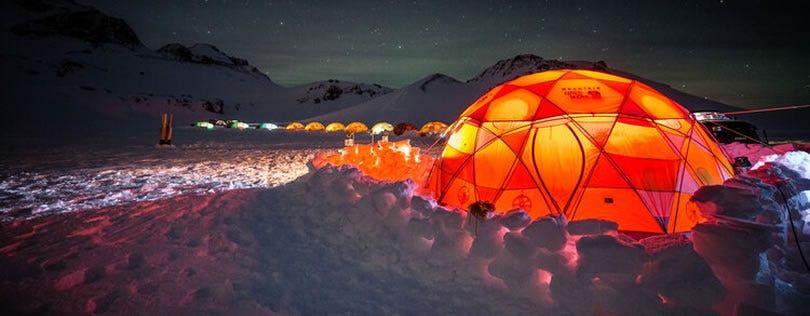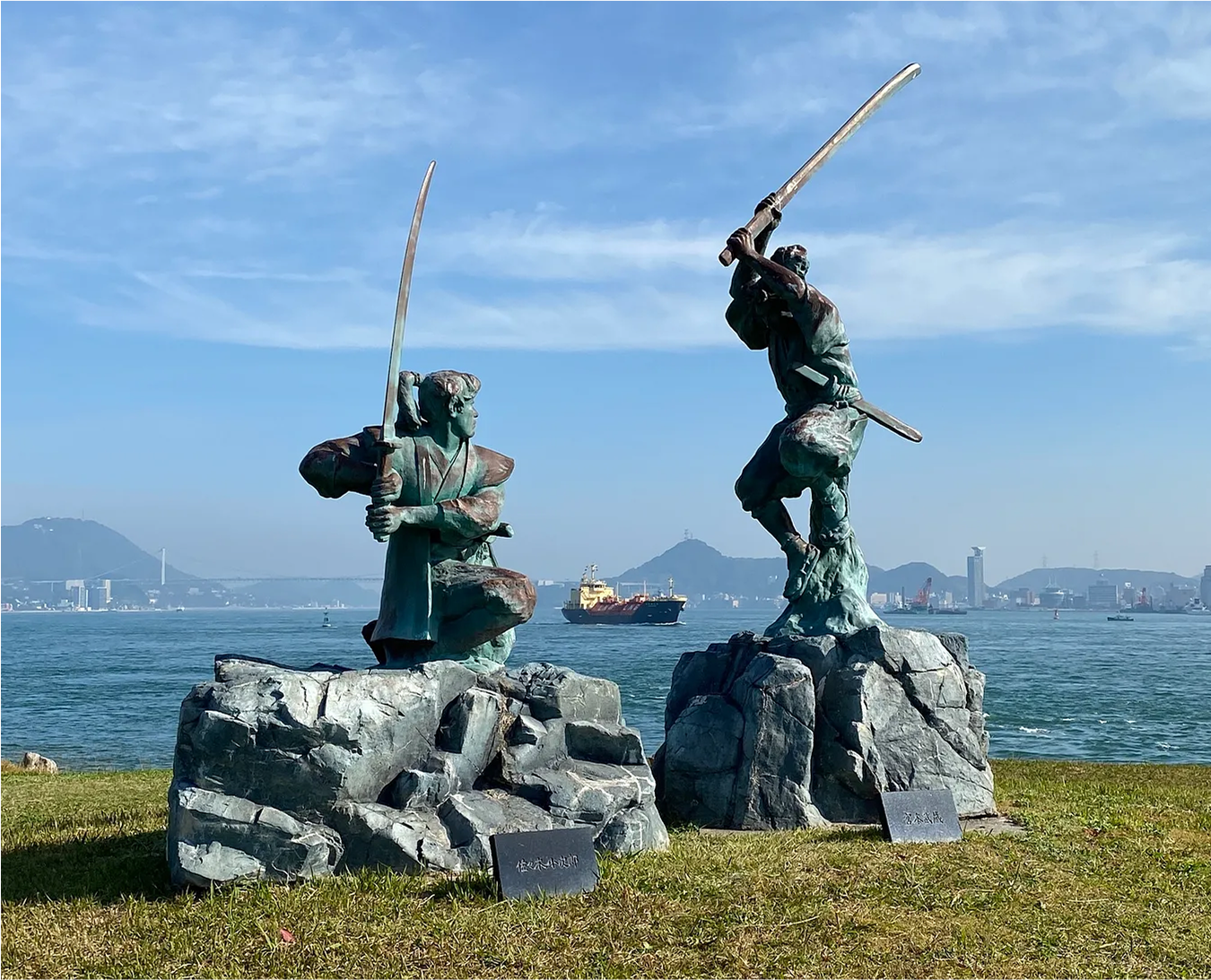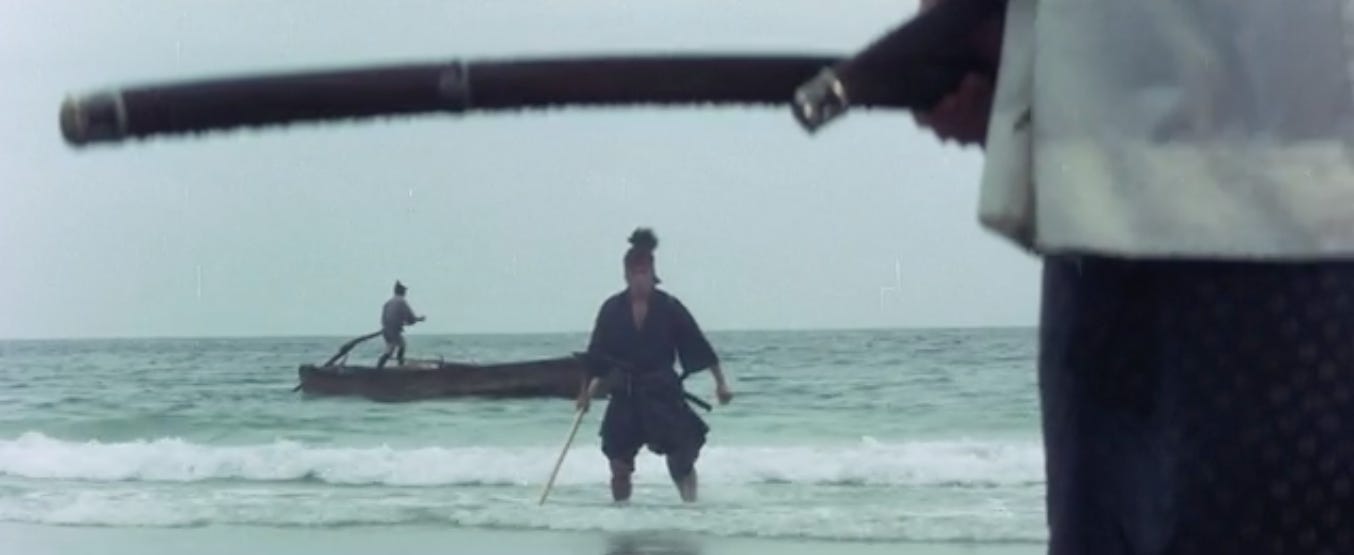Dear friends,

Now:
You will find me online as Leo Zaffre, not Leo Ariel.
The name originated in my high school science fiction class, where my teacher asked everyone what their favorite color was. I wanted to go for a deep blue, so I searched online and discovered the hue Zaffre.
The reason is if/when I start a fashion line — it will be called Zaffre — because the name has more aura!
Maybe I follow the long-standing tradition of fashion designers who’ve started a brand under their last name: Cristóbal Balenciaga, Coco Chanel, Elsa Schiaparelli, Giorgio Armani.
Lowkey Zaffre would go hard as the name of a jewelry brand.
For a killer at-home workout, I recommend this 50-minute pilates follow-along:
It is done purely on a mat (= no weights, bands, or machines).
Zoe Jumabhoy is an ex-dancer and certified Pilates Academy International teacher, who specializes in anatomy, biomechanics, and postural analysis.
Zoe’s cues are superb. She makes simple exercises (eg. plank, glute bridge) extremely painful via slight tweaks and mind-muscle connection.
Soon:
You will see me manifest a high fashion media brand.

That’s all I wanted to share!
Only continue reading if you’re curious about my motivation and thinking behind the fashion project.
Why Start a Fashion Media Brand?
The WHY behind the WHAT:
Over the last 3 years, I’ve done several short-term projects. Now, I’m looking for something a bit more long term.
So I did some research:
…
Holy smokes!
Did I find my dream job?!
Here are some words said by the Founder that stood out to me:
“A client once asked us to create an entire trip based on a page from their grandmother's journal.”
“Memorable travel is much more than abundant spending, generic destination guides, and obvious same-same activities.”
“To truly connect to a place, you need personalization that goes way beyond the norm.”
“We bring in a kind of a theatrical side to our role. We'll literally close our eyes and think, "Ok they're going to be walking to this place, then they're going to turn here, and this is what they'll see, this is what they'll feel.”
"We focus on the client and generate big ideas to effectively solve their problems of life, using travel.”
So many things resonate with me:
The idea/challenge of designing an entire experience around one page of a grandmother’s journal page
My frustrations around travel and how it’s all the same
Solving people’s life problems
Here are a few case studies:
How to design a compelling vacation for children:
“A family came to us and said ‘Look our kids are at a difficult age. They just don’t want to travel with us on holiday anymore.’
So we discovered that the kids’ big passion was computer games. They wanted to stay at home, play games, and be with their friends.
So we said to the family ‘Look, we’ll analyze the computer games, work out why they are so utterly compelling and take all of those elements and break them up into travel.’
And we turned the entire trip into a game.
The family would be met by random people who gave them a number and be told to think about that number and then the people would disappear.
Every evening, they spent an hour playing a board game, and how they moved around the board dictated what they would do the next day.
There came a point where they didn’t know whether the people in the trip were actors or real locals.”
Or let’s say your teenage daughter is into fashion.
You want to give her a gift but she has school on Monday.
What if — for 72 hours she got to experience what it’s like to be a supermodel?
Eeeeek!
The possibilities are endless!
I get excited just by thinking about it!
And then you layer on the money dimension.
"Our clients net worth is sometimes equivalent to the GDP of some countries, so everything is possible. If it's on this planet or in near space, it's achievable.”
We’ll fly you to the South Pole to experience life in a remote research station – and maybe run in the Antarctic marathon. Or join scientists aboard an icebreaker and dive with a film crew shooting an undersea documentary. Hike into the Patriot Hills for expert-guided climbs (advanced or beginner). Or get your aerial views while in motion – hot-air ballooning or kite skiing or briefly taking flight in a snowmobile race.
Go beyond laboratory experiments and test the effects of zero-gravity on Newton’s Laws of Motion for yourself. Or see how surface tension causes water droplets to form perfect spheres first-hand. For those wanting an in-flight education, learn how to grow plants in a hydrofuge, distil whiskey in space or ferment cheese in microgravity.”
So I called the CEO.
We had a 31 minute phone call.
I pitched myself to him for a job. He pitched his startup back at me.
We explored many options.
…
It’s just not the right time.
That’s ok!
I’ll ask every 3 months I get it.
In the meantime— What are the set of actions I can take that increase the probability that I get the job?
What if I…
Build an audience of high fashion enthusiasts?
Media is one of the highest leverage 21st-century activities. Demand in this skill — done at the highest level — will only rise in the next two decades.
High fashion is correlated with luxury travel. People who like high fashion also tend to like luxury travel.
I had a literal dream about fashion in Jul 2024. Fashion has been on my radar ever since.
Creativity and empathy lead to success in modern day comms. Two things I think I’m actually good at.
Let me present to you three visions of success for this project.
Vision: Pivot to Personalized Travel
High-Level Summary: Build a fashion media brand, then leverage my audience and my skills in marketing to get my dream job.
Operational Definition of Success: I am working with Philippe Brown at B&H on a day-to-day basis to conceptualize and execute personalized travel plans to fulfill clients’ desires.
Point of Leverage: I will ask every 3–6 months (email, phone call, or visit the office at 4, 160 Barlby Rd, London W10 6BS, United Kingdom).
Foresight: According to Philippe, there are only 4 companies in the world that provide this level of personalized service. All other travel agencies offer generic services in a low-margin industry. My task is to identify the other 3, assess fit, and pursue if they pass my checks.
Schematic:
Vision: Convert to Media Arm
High-Level Summary: Build a sizable audience, then offload it.
Operational Definition of Success:
# followers by platform: Instagram: 400,000 TikTok: 250,000 YouTube: 225,000 Pinterest: 200,000 Email: 125,000 Facebook: 100,000 Assumptions Made: 50M high fashion enthusiasts, 1% audience capture, platform penetration of IG at 80%, TikTok at 50%, YT at 45%, Email at 25%, Facebook at 20% Source The account(s) are run by somebody not named me!
Point of Leverage: Finding a successor who shares the passion, interest, ambition, style and skillset.
Foresight: Offloading the project will give me space to think strategically while continuing to serve our existing audience. Two paths of expansion I see are (1) horizontal scaling via media-building in adjacent spheres (eg. luxury travel) or (2) going upstream to serve a different customer profile (eg. fashion designers).
Schematic:

Vision: Become #1 in the Field
High-Level Summary: Be providers of the most value to the fashion community in the world.
Operational Definition of Success:
Same as #2 but with 10% audience capture. # followers by platform: Instagram: 4,000,000 TikTok: 2,500,000 YouTube: 2,250,000 Pinterest: 2,000,000 Email: 1,250,000 Facebook: 1,000,000
Content Strategy:

Q: How would I approach getting Anna Wintour to say Yes?
Short answer: She has to get more out of it than I would.
Long answer: I would start by reverse engineering “what would she want?” and “how do I give that to her?”
Facts:
She doesn’t give many interviews.
She has once quipped that journalists ask the same boring questions over and over again.
She’s good at picking out photographers and set locations and fashion designers.
She’s a busy person.
Guesses:
It’s probably important for Anna to be presented the way she wants to be presented.
She’d probably want to pre-approve the questions that will be asked of her?
She cares about humanitarian causes?
Going with deep questions is probably not the way with Anna.
Building up to a yes:
Don’t ask boring questions!
In one of the questions, give her an opportunity to give a shoutout to a humanitarian cause.
Coalition build. Get a photographer Anna likes, and a fashion designer she admires — who agrees to curate the outfits. For Anna’s wardrobe she can use her own. By appearing on the show, she indirectly supports the photographer/fashion designer — something she may or may not be inclined to do.
Set up logistics such that we’ll only need 2 hours of her time for the shoot; no more.
Pitch:
You’ll be addressing a huge audience of fashion enthusiasts.
You’ll get an opportunity to plug a humanitarian cause you care about.
You’ll get an opportunity to support a fashion designer whose work you believe in.
All you have to do is show up and be yourself!
Timeline:
Anna Wintour is 75 years old. There is a limited window. When she retires and fades from the public eye, she’ll be less relevant for our audience.
Get it done in 3.5 years!
The key to success is to build a replicable content model.
Take Hot Ones.
They interview celebrities while eating spicy wings.
It’s genius.
Most celebrities are media-trained and have composure under cameras. Spice breaks them out of composure, which gets them to show a different side of themselves; therefore are more relatable for the audience.
So the idea is you have a base format and then alter the toppings.
Change the guest
Change the outfits
Change the questions
Change the set
Change the interviewer
Let’s say Iris Van Herpen designs an aqua-themed collection that she is wanting to promote.
We change the set to be marine-themed such that there is an aquarium in the background.
Or how about:
Instead of interviewing fashion designers, I interview 20 models that he/she chooses — who act as the mouthpiece for the designer — there’s a precedent for this as they pick models for their fashion shows.
Or I play jester and wear whatever outfit the fashion designer chooses — no matter how silly or foolish.
You get the picture.
There are endless ways to be creative.
And I see this type of content resonating with people— more than exclusive fashion shows that people can’t even get into!
Point(s) of Leverage:
Building a team who can ideate and execute content visions in the real world.
Mastering 21st century media distribution via all relevant channels.
Elevating fashion designers before the rest of the world knows about them. Launching their careers. Capturing value in return via investment and collaborations.
Foresight: The fastest way to lose is to copy what losers are doing. The second-fastest way to lose is to copy what winners are doing. The surefire way to win is to be relentlessly focused on your target audience. Find out who they are, what they care about, and deliver content that they will love or help them get to where they want to go. Our job is to serve them, not the other way around.
This is easier said than done — egos, mimetic tendencies, and fear of judgment are all obstacles that prevent us from serving our audience in the best possible way.
To help me achieve my goals, I have brought on a philosopher for guidance at this stage.
Enter: Miyamoto Musashi
Disclaimer: Musashi’s philosophy centers on effectiveness. For guidance on ethics or aesthetics— find someone else.
Musashi retired with a 62–0 record in his duelist career. Compare that with Khabib Nurmagomedov — considered by many to be the greatest UFC fighter — who went 29–0. Or Muhammad Ali in boxing — who had a 56–5 record.
Unlike in boxing or the UFC — in a 17th-century Japanese duel — the loser dies. A perfect record meant you survived.
While I’m not here to murder anyone with a sword — I have found that the way he approaches craft — applies to many areas in life.
Musashi’s philosophy orbits around two principles:
Formlessless
Emptiness
Formlessless
adaptation without attachment

While most duelists at the time loved certain weapons or preferred styles of attack, Musashi wasn’t attached to the weapon he used. He found over-reliance on a particular tool a weakness.
“Weapons should be hardy rather than decorative. You should not have a favourite weapon. To become over-familiar with one weapon is as much a fault as not knowing it sufficiently well. You should not copy others, but use weapons which you can handle properly. It is bad for commanders and troopers to have likes and dislikes.”
Many duelists had “signature moves” that they loved to show off. They played to the crowd to attract a school of followers. Musashi only cared about winning.
“The purpose of my school is to defeat others through strategy, not through prettiness or elegance.”
Musashi would advocate use whatever tactic works best for a particular opponent in a particular moment in time. Don’t cling to any rule, style, or way of doing things.
“In strategy, you must know the ways of all professions, learn all paths, and observe everything without distortion.”
Learning “methods” is helpful insofar as it helps you achieve the goal, but the ultimate manifestation of form is the letting go of form.
“Once you have mastered form, you must let it go.”
Emptiness
action without obstruction

In the heat of battle, Musashi believed in the alignment of intentions with actions and the full force of spirit. Only then does one achieve “an empty mind”— when one acts freely without hindrance.
“When your spirit is not fixed on anything, it is empty, and it is not hindered.”
“The primary thing when you take a sword in your hands is your intention to cut the enemy, whatever the means. Whenever you parry, hit, spring, strike or touch the enemy's cutting sword, you must cut the enemy in the same movement. It is essential to attain this. If you think only of hitting, springing, striking or touching the enemy, you will not be able actually to cut him.”
“Do not, under any circumstances, depend on a partial feeling.”
“Do nothing which is of no use.”
Perhaps these principles are best exemplified in Musashi’s duel against Sasaki Kojirō in 1612.
The duel was the equivalent of a Ali vs. Frazier or McGregor vs. Khabib — two undefeated swordsmen at the peak of their fame. Sasaki was refined, deadly, and known for his elegant “swallow cut” — a swift, downward stroke that mimicked the speed and precision of a swallow diving mid-flight.
Musashi deliberately arrived three hours late. He showed up disheveled, unshaven, his hair unkempt, and his clothing loose. Rather than bringing a sword, he handled a wooden ore that he sharpened into a point on the boat ride on his way here. Now, he intentionally made the ore slightly longer than Sasaki’s katana to give himself a reach advantage.
But imagine what Sasaki must have been feeling:
“Here I am, standing for 3 hours in the scorching heat. All of my adrenaline from the anticipation of the battle has worn off.”
And what was he thinking?
“Really? Are you serious? This Musashi guy shows up three hours late, looks like he just got out of bed, isn’t even standing in a proper fighting stance, and armed with a boat paddle?”
The duel began.
Sasaki drew his long blade and began to prepare his signature “Swallow Cut”— but Musashi, anticipating this, closed the distance fast and struck first — bringing his wooden ore down on Sasaki’s head — fracturing his skull and killing him instantly.
The match was over in a single blow.
Musashi bowed, boarded his boat, and left.
He didn’t even stay for the awards ceremony.
…
Legend.
Some Takeaways:
Swordfighting does not reward rigid thinking. Warriors have to be fluid — to respond to reality, not dogma.
Nullius in verba = Take nobody's word for it. In The Book of Five Rings — Musashi repeatedly says — “Don’t listen to me. Test everything for yourself.”
“You must research what is written here” (page 9, 21, 25, 26, 30, 37, 38, 40, 41, 42, 47, 48, 49, 50, 51)
“You must study this deeply” (p 14, 21, 42, 43, 46)
“You must consider this carefully” (p 26, 31, 44)
“You must be able to judge this” (p 16, 40, 45)
“You must train sufficiently to appreciate this” (p 17, 24, 25, 28, 29, 34)
Formlessness = adaptation without attachment. Emptiness = action without obstruction.
— Leo


























The energy in this post!!! The outcome doesn't even matter - the fire behind this is going to take you places.
“A client once asked us to create an entire trip based on a page from their grandmother's journal.”
“Do not, under any circumstances, depend on a partial feeling.”
These two things got me thinking crazy thoughts
…so looking forward to this…brilliant mindflow and energy doog…